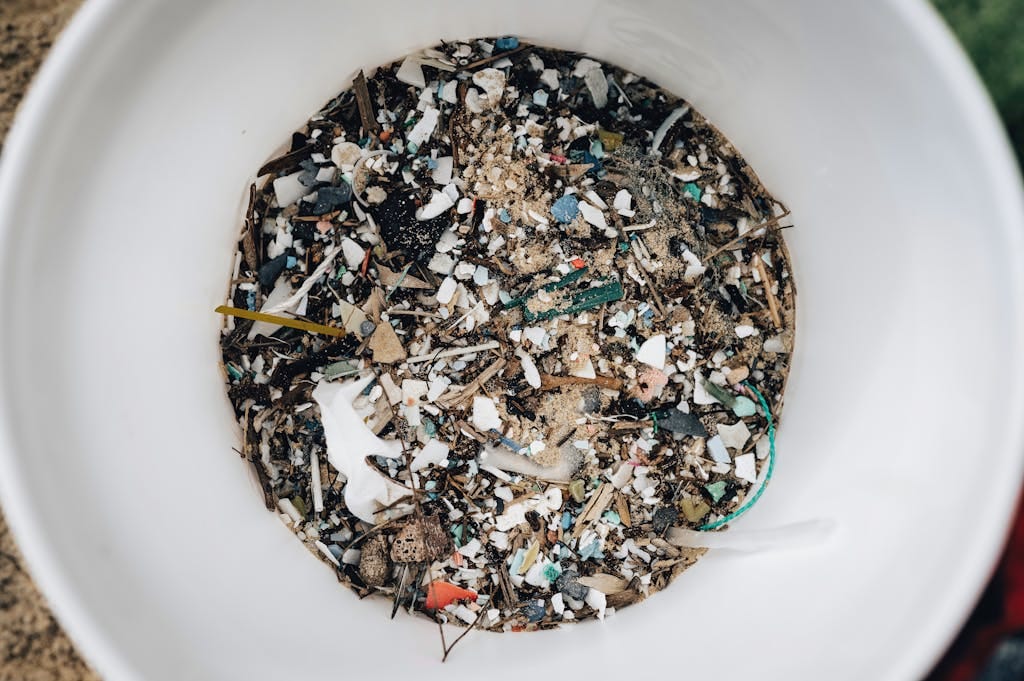FREE SHIPPING OVER $50
Microplastics Are Everywhere—Here’s How to Keep Them Out of You
Microplastics are the uninvited guests of modern life. From the air we breathe to the food we eat, these tiny plastic particles are sneaking their way into our bodies. While the idea might sound like a sci-fi horror movie, the reality is that microplastics are now found in human blood, lungs, and even placentas. So, what can you do to protect yourself? Let’s break it down.
What Are Microplastics and Why Are They a Problem?

Microplastics are tiny fragments of plastic, usually smaller than 5 millimeters. They come from larger plastic items breaking down or from tiny beads and fibers intentionally included in products like cosmetics and textiles.
The issue isn’t just their omnipresence; it’s their potential health risks. Microplastics can carry harmful chemicals, disrupt hormones, and trigger inflammation. Long-term exposure might even contribute to serious diseases.
But don’t panic—there are practical steps you can take to minimize your exposure.
How to Avoid Microplastics
1. Choose Your Water Wisely
Tap water and bottled water can both contain microplastics. In fact, bottled water often has higher levels. To limit your intake:
- Switch to a high-quality water filter: Look for one certified to remove microplastics, like reverse osmosis or carbon block filters.
- Skip single-use plastic bottles: Opt for reusable glass or stainless-steel bottles.
This one change can drastically cut down the plastic you inadvertently consume.
2. Be Selective About Seafood
Seafood is a major source of microplastics since marine life often ingests them. While we can’t ask fish to go on a microplastic-free diet, you can:
- Opt for smaller fish: Larger fish like tuna accumulate more microplastics over their lifetime.
- Check sourcing: Look for sustainably sourced seafood with lower exposure to polluted waters.
Enjoy your sushi nights without the side of plastic.
3. Say No to Plastic Food Packaging
Plastic packaging is a notorious contributor to microplastic exposure. Heat and prolonged storage can cause plastics to leach particles into food. To avoid this:
- Store food in glass or stainless steel: These materials don’t leach harmful substances.
- Avoid microwaving in plastic containers: Always transfer food to a microwave-safe dish before heating.
- Shop at bulk stores: Bring your own reusable bags and containers to reduce waste and exposure.
4. Upgrade Your Laundry Game
Synthetic fabrics like polyester and nylon release microfibers during washing, which can end up in waterways and eventually your body. Combat this by:
- Using a microfiber-catching laundry bag: Products like Guppyfriend trap microplastics during washes.
- Washing less often: Reduce the frequency of washing synthetic fabrics to limit fiber release.
- Choosing natural fibers: Opt for cotton, linen, and wool when shopping for clothes.
5. Check Your Personal Care Products
Many exfoliating scrubs, toothpastes, and cosmetics contain microbeads, which are a type of microplastic. These tiny beads slip through water treatment systems and pollute ecosystems.
- Read ingredient labels: Avoid products containing polyethylene (PE) or polypropylene (PP).
- Go natural: Switch to products with natural exfoliants like sugar, salt, or oatmeal.
Your skin (and the planet) will thank you.
6. Advocate for Change
While individual actions are impactful, systemic change is crucial. Advocate for policies that reduce plastic production and improve waste management. Some ways to get involved:
- Support bans on single-use plastics: Many cities and countries are implementing these bans—add your voice to the cause.
- Encourage corporate responsibility: Write to brands encouraging sustainable practices.
- Educate others: Share resources and knowledge to raise awareness about microplastic pollution.
Can You Completely Avoid Microplastics?
Here’s the uncomfortable truth: avoiding microplastics entirely is almost impossible. They’re in the air, soil, and water, and current regulations haven’t caught up with the scale of the problem.
However, you can reduce your exposure significantly by making these lifestyle changes. Think of it like wearing sunscreen—you can’t avoid the sun, but you can protect yourself from the worst of it.
What Does the Science Say About Microplastics and Health?
While research is still emerging, studies suggest microplastics may cause:
- Oxidative stress: A process linked to aging and chronic diseases.
- Hormone disruption: Chemicals like BPA in plastics mimic estrogen, affecting hormone balance.
- Immune system changes: Microplastics may interfere with immune responses.
The long-term effects remain unclear, but reducing exposure now is a safe bet for your health.
Final Thoughts: Small Steps, Big Impact
The world may be filled with microplastics, but you have more control than you think. By making simple changes to your diet, shopping habits, and daily routines, you can minimize your exposure and contribute to a healthier planet.



